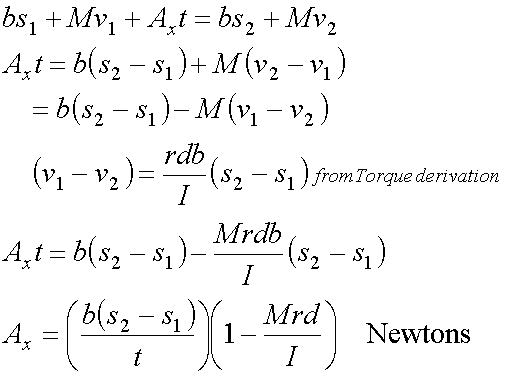Brilliant Impulse Momentum Equation Derivation

Measure the mass of your dynamics cart and record the value in the data table.
Impulse momentum equation derivation. From the equation we see that the impulse equals the average net external force multiplied by the time this force acts. Click here for an alternate derivation. The result of the force acting for the given amount of time is that the objects mass either speeds up or slows down or changes.
Mathematically its represented with this equation. 4 Principle of Angular Impulse and Momentum Equation 3 gives us the instantaneous relation between the moment and the time rate of change of angular momentum. Impulse Momentum Theorem statement.
Δp F. Linear momentum is related to linear momentum by the impulse-momentum. Impulse momentum theorem states that the change of momentum of a body is equal to the impulse applied to it.
The impulse-momentum I-M equation is a reformulationan integrated form like the work-energy equationof the equation of motion Fma. Δt is the impulse applied. If the Motion Detector has a switch set it.
The equation is known as the impulse-momentum change equation. Impulse is something that you use occasionally or daily. The quantity on the left F net t is the impulse exerted on the object by the net force.
Total linear momentum is an extrinsic and conserved quantity provided the net external force is zero. As with the concepts of impulse and momentum the derivation above holds just as true in two and three dimensions. Using the impulse-momentum theorem we can investigate the forces involved indirectly.













